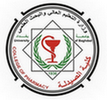The College of Pharmacy discussed the PhD dissertation entitled “Possible Protective Effect of Cilnidipine and Bexarotene Each alone and their Combination against Alpha-naphthyl isothiocyanate-induced Intrahepatic Cholestasis in Male Rats” by the student Thamer Abdulla Mohammed and the supervisor, Professor Dr.Munaf Hashim Abdulrazzaq, at the Pharmacology and Toxicology Department. The study aimed toexplore the regulatory functions of nuclear receptors in maintaining bile acid homeostasis. The study includedforty male rats (n=40), which were randomly assigned into five groups (n=8 per group) as follows:Control groupRats received an oral administration of 1 ml/kgcorn oil 48 hours prior to euthanasia. Positive control group (ANIT)Rats received a single oral dose of 100 mg/kg alpha-naphthyl isothiocyanate (ANIT) 48 hours prior to euthanasia.Group III (Cilnidipine) Rats received cilnidipineat a dose of 10 mg/kg/day orally for seven consecutive days.Group IV (Bexarotene)Rats received bexarotene at a dose of 45 mg/kg/day orally forseven consecutive days. Group V (Combination treatment)Rats received a combination of cilnidipine (10 mg/kg/day) and bexarotene (45 mg/kg/day) orally for seven consecutive days. Rats in groups III, IV, and V administereda single oral dose of 100 mg/kg ANIT on day five, and euthanasia was performed on day seven. The study concluded that cilnidipine, bexarotene, and their combination exerts a significant protective effect against intrahepatic cholestasis in rats. This protective effect was evidenced by a marked reduction in ALP, TBA, DBIL, TBIL, GGT, IL-1β, and TNF-α serum levels. Furthermore, liver tissue homogenates demonstrated a decrease in MDA levels, accompanied by an increase in antioxidant enzymes SOD and GPX-1, suggesting improved oxidative stress status.At the molecular level, the treatments promoted an upregulation of hepatic mRNA and protein expression, specifically involving the activation of the nuclear factor erythroid 2-related factor 2 (Nrf2) signaling pathway, along with farnesoid X receptor (FXR) signaling pathway activation. The study recommended further research into novel nuclear receptor agonists and antagonists to explore their therapeutic potential for liver and metabolic disorders.



